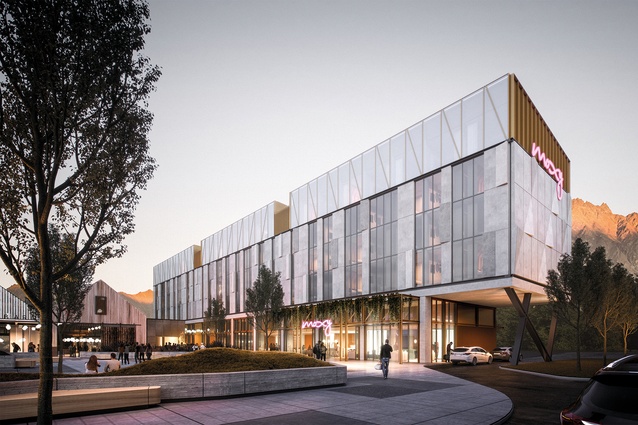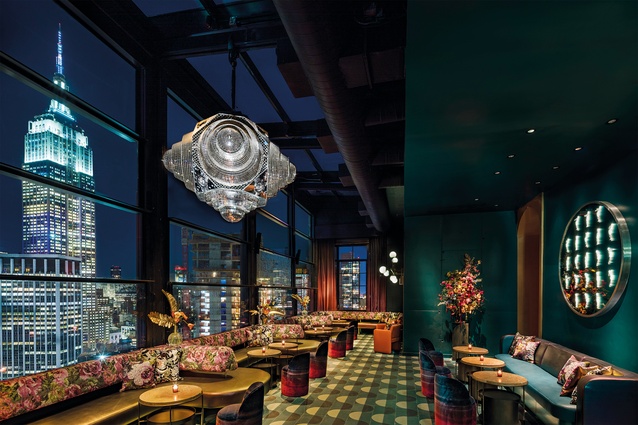Hotels in flux: Part three
Ignite's Audrey de Filippis discusses distinctive storytelling through design and the evolution of the lifestyle brand in the third part of our series.
[Editor’s note: This series about the future of the hotel industry was produced for print publication and mostly before the COVID-19 pandemic. As such, a lot of the statistical figures and trend forecasts have and will continue to change drastically due to the closure of international borders, lockdown and the financial repercussions of both. Parts of this series will be updated with current, post-pandemic information and we will make a note if and when the online version of the article differs from the published version.]
When Ian Schrager and Steve Rubell opened the doors of the Morgans Hotel NYC to the public in 1984, not only did they create a new category of hotel – ‘the boutique’ – but they launched the next generation of experiential design in the hospitality industry. For Schrager and Rubell – who also created Studio 54 – opening an experience-driven hotel was not a ground-breaking feat but, when they opened without a functioning kitchen and accommodated room service orders through takeout deliveries re-plated onto beautiful china, they proved that focusing on the guest experience was critical to the success of any property.
Though this opening made a small wave in the mid-’80s, the hotel industry continued to tick away with the steady growth of both boutique independents and global full-service flagship brands, each catering to different guest types and living harmoniously together in the same market.
Enter the new millennium. The internet is now mainstream and the iPod makes an appearance, followed, a few years later, by the iPhone, which has launched us into an era where technology has revolutionised the way we visually and socially interact with information and each other. Flagship hotel brands begin to slip in popularity as guests start to search for unique experiences during each stay.
Welcome, the lifestyle brand: the non-boutique boutique hotel. A response by global brands to create a comparable hotel offering, this ‘boutique hotel’ for the masses has a focus on celebrating the lifestyle of the guest, rather than the consistency of experience that ‘hard’ brands offer. Since then, the world’s 10 largest hotel chains now offer a combined 176 brands at various price points, more than 35 of which didn’t exist a decade ago.
So, how can you differentiate yourself in a market saturated with bespoke hotel offerings? You forget about the traditional rules and you decide to tell a genuine story through design. In a vast city that can be overwhelming to a new visitor, you break down the scale and celebrate the spirit of the place you are in.
The Moxy Chelsea in New York City has done just that. The hotel opened last year and its design takes you on a journey through the history of the neighbourhood: from the hotel entry, which is reminiscent of the coveted Chelsea Flower Market, to the gritty essence of the Meatpacking District at check-in. In a city saturated with competition, this hotel successfully delivers an independent and local experience, all while remaining a flagship property for one of the largest hotel companies in the world.
Launched in 2014, the Moxy brand has rapidly expanded its presence around the globe with more than 100 properties open or in the works, including New Zealand’s first – expected to open in Queenstown in 2022.
Similarly, other large global brands have launched youthful lifestyle offshoots, including Tribe by Accor, voco by IHG, Radisson Red and, most recently, Caption by Hyatt. This is in addition to collection brands such as Tapestry by Hilton and Tribute by Marriott, to name two. By diversifying the brands in their portfolios, global operators have confirmed their places in
all sectors of the market.
But lifestyle brands have only recently come to our shores. When I first arrived in New Zealand – having spent my career working with global hotel chains and independents alike in the United States – I noticed that many of the big brands I was accustomed to seeing were completely absent here. Observing the growing demand on the hotel sector and its projected growth, I believed that the global brands would make their way to this part of the world. However, rather than bringing their flagship full-service brands, they would realise that the culture in New Zealand revels in the independent free spirit: a culture that would attract and embrace the lifestyle brands emerging in their repertoires.
In the past few years, we have welcomed adventurous and vibrant brands such as SO/, Naumi, Cordis and M Social, among others, who have broken ground and shared with us the possibility of design-focused lifestyle hotels.
In a country that is well-versed in celebrating its people, places, culture and history, we – as designers – are presented with the remarkable opportunity to translate this in the design of our spaces. Here, the hotel industry is on the cusp of significant changes in the ways in which it provides accommodation. A wave of new global brands has entered the market and new ones continue to arrive. We are fortunate that these hotel operators seem to understand the independence of New Zealand; they have presented us with a variety of lifestyle brands that allow us to design with our unique perspective at the core.
Update
Since this article was printed in Interior magazine, we have seen our tourism market experience unprecedented change. While our borders remain closed, increased regional travel and the opportunity for trans-Tasman travel are providing much-needed hope for the future of tourism in New Zealand. But COVID-19 has impacted the way we work, live, socialise, and travel – and this has profoundly altered the hotel experience.
We’ve seen an immediate shift towards contactless interactions, hygienic spaces, and re-imagined dining experience. So how do hotels provide a secure and hygienic approach while continuing to embody what hotels and hospitality are known for – creating memorable and entertaining experiences?
We must continue to offer guests an authentic, local experience and tell a genuine story through design. This is especially important as international tourist numbers remain low and local tourist numbers increase. As a country, we have a uniquely independent spirit and as we travel around our own backyard, we will stay in places that offer bespoke experiences aimed at the local market.
I believe this free-spirit, combined with a little Kiwi ingenuity, will bode us well for the months—and perhaps years—ahead.
Stay tuned for Audrey’s upcoming 2020 Vision column to learn more on how local hotels can reposition themselves and adapt to the ‘next normal’.
Click here to see more from the Hotels in flux series.











